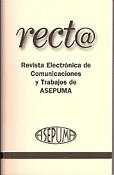Análisis de la influencia de la administración portuaria en la sostenibilidad de los puertos mediante técnicas de inteligencia artificial
DOI:
https://doi.org/10.24310/recta.18.2.2017.19919Keywords:
Variables portuarias, Sostenibilidad, Puerto, Gestión portuaria, Nodo, Redes BayesianasAbstract
Numerous variables are discussed in the port operation and management, needing to know relationships between them to modify the operating conditions. Use of Bayesian networks makes possible to classify, predict and diagnose these variables, also estimating posterior probability of unknown ones based on known ones. Thus, at the planning level, it is not necessary to know all variables in knowing their relationships, being able to use Bayesian networks to make decisions, introducing possible actions and usefulness of their results.
Present study has generated a database with more than 100 port variables, classified as in smart ports studies in the Spanish Port System in four categories: economic, social, environmental and institutional. After that, a network has been generated using a non-cyclic conducted grafo to know relations between variables in terms of parents and sons. From this network it is observed that economic variables are cause of the other typologies, practicing parents in most of the cases. Also, knowing the environmental variables, network allows to estimate posterior probability of the social ones. Thus, it is concluded that the Bayesian networks allow to model uncertainty probabilistically even with a large number of variables.
Downloads
Publication Facts
Reviewer profiles N/A
Author statements
Indexed in
-
—
- Academic society
- N/A
- Publisher
- UMA Editorial. Universidad de Málaga
Downloads
Published
How to Cite
Issue
Section
License

This work is licensed under a Creative Commons Attribution-NonCommercial 4.0 International License.









